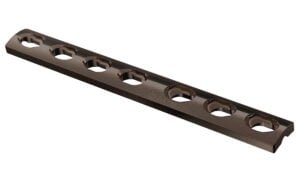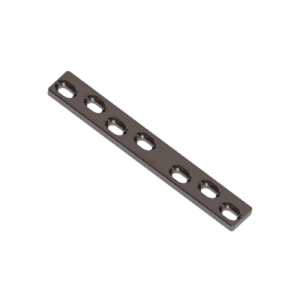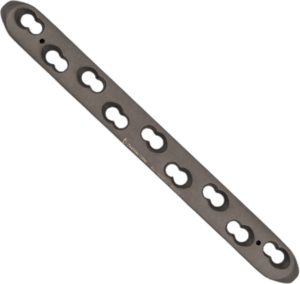
Ulna fractures, also known as forearm fractures, can occur due to various causes such as falls, sports injuries, or accidents. These fractures can significantly impact a person’s daily life, hindering their ability to perform simple tasks. In many cases, surgical intervention is required to facilitate proper healing and restore functionality. One common treatment option for ulna fractures is the use of plates. In this blog post, we will explore everything you need to know about ulna fractures and the role of plates in their treatment.
Understanding Ulna Fractures
The forearm is made up of two long bones, the radius and ulna. The ulna is located on the inner side of the forearm and is responsible for stability and rotation of the forearm. Ulna fractures can occur at various locations along the bone, including the olecranon (near the elbow), the shaft, or the distal end (close to the wrist). These fractures can range from simple cracks to more complex breaks that may involve multiple fragments.
Types of Ulna Fractures
Stable Fractures: Stable ulna fractures refer to fractures where the bone breaks cleanly without significant displacement. In these fractures, the bone fragments remain relatively aligned and in their normal anatomical position.
Displaced Fractures: Displaced ulna fractures occur when the bone fragments are misaligned or separated from their normal position. These fractures can result from high-energy trauma, such as a car accident or a severe fall.
Comminuted Fracture: A comminuted fracture refers to a fracture where the ulna bone breaks into three or more fragments. This type of fracture can result from a high-energy impact, such as a severe fall or a car accident.
Open Fracture: An open fracture, also known as a compound fracture, occurs when the broken end of the ulna bone protrudes through the skin. This type of fracture is particularly concerning as it increases the risk of infection and requires immediate medical attention.
Causes and Risk Factors of Ulna Fractures
Here are some common causes and risk factors associated with ulna fractures:
Trauma and Accidents: One of the primary causes of ulna fractures is trauma or accidents. This includes falls, sports injuries, motor vehicle accidents, workplace incidents, or any forceful impact to the forearm.
Sports Injuries: Participation in sports activities, particularly contact sports or those involving repetitive stress on the forearm, can increase the risk of ulna fractures.
Osteoporosis: Osteoporosis is a condition characterized by weakened bones, which increases the risk of fractures. Individuals with osteoporosis have reduced bone density and strength, making their bones more fragile and susceptible to fractures even with minor trauma or falls.
Repetitive Strain Injuries: Engaging in activities or occupations that involve repetitive motions or excessive strain on the forearm can lead to stress fractures or other types of ulna fractures.
Orthopedic Implants for Ulna Fractures
Orthopedic implants play a crucial role in the treatment of ulna fractures, particularly in cases of displaced fractures where surgical intervention is required. Here are some common types of orthopedic implants used for ulna fractures:
Plates and Screws: Plates and screws are among the most commonly used implants for ulna fractures. The plates are typically made of metal, such as stainless steel or titanium, and are anatomically contoured to fit the shape of the ulna.
Intramedullary Nails: Intramedullary nails, also known as rods, are cylindrical implants inserted into the medullary canal (the central hollow portion) of the ulna bone. These nails are typically made of metal and are used in cases where the fracture involves the shaft of the ulna.
External Fixators: External fixators are devices used to stabilize and immobilize the fractured bone segments externally. They consist of pins or wires inserted into the bone on either side of the fracture, which are connected to an external frame. The frame is then adjusted and secured to hold the fractured segments in proper alignment.
Locking Compression Plates: Locking compression plates (LCP) are specialized plates that combine the features of traditional plates and screws with locking mechanisms. The plate has screw holes that can accommodate locking screws, which lock directly into the plate, providing a more stable construct.
Bone Grafts: In some cases, when there is a significant loss of bone or poor bone quality, bone grafts may be used along with the implants. Bone grafts involve taking bone tissue from another part of the body or using synthetic graft materials to fill gaps or promote bone healing.
Orthopedic plates for Ulna Fractures
Here are some of the commonly used plates for ulna fractures:
Dynamic Compression Plate (DCP)

The DCP is a traditional plate that features compression holes to allow for compression of the fracture site during healing. It is designed to provide stability and promote bone alignment.
Limited Contact Dynamic Compression Plate (LC-DCP)

The LC-DCP is a variation of the DCP that features a reduced contact surface with the bone. It allows for improved blood supply and reduced risk of soft tissue irritation while still providing stability.
Locking Compression Plate (LCP)

The LCP combines the features of traditional plates with locking mechanisms. It has screw holes that allow for locking screws to be inserted, providing a more stable construct.
Precontoured Plate
Precontoured plates are designed to match the anatomical shape of the ulna, providing a better fit and reducing the need for plate bending during surgery. These plates can help ensure proper alignment and stability.
Volar Plate
Volar plates are specifically designed for fractures in the distal end of the ulna (close to the wrist). They are contoured to fit the volar (palm-side) surface of the ulna and provide stability for fractures in this region.
Reconstruction Plate

Reconstruction plates are larger plates that are used in cases of complex fractures or when there is extensive bone loss. These plates provide additional stability and support for more severe fractures.
The Role of Plates in Ulna Fracture Treatment
Plates are metal implants that are used to hold the fractured bone segments in place during the healing process. They provide stability, promote bone alignment, and allow for early mobilization. The surgical procedure involves exposing the fractured bone, reducing the fragments to their normal position, and securing them using plates and screws.
Advantages of Plate Fixation
Stability: Plates provide rigid fixation, ensuring that the bone fragments remain in the correct anatomical position during the healing process.
Early Rehabilitation: Plate fixation allows for early mobilization and rehabilitation exercises, promoting better range of motion and faster recovery.
Customization: Plates come in various shapes and sizes, allowing surgeons to select the most appropriate plate for each individual fracture pattern.
Load-Sharing: Plates can bear a portion of the load transmitted through the bone, reducing stress on the fractured area and promoting healing.
Conclusion
Zealmax Innovations Pvt. Ltd., a prominent Indian manufacturer and exporter of orthopedic implants, excels in developing groundbreaking solutions in the field. Their specialization lies in the production of orthopedic plates, catering to a wide range of fractures, including ulna fractures. With a global customer base, Zealmax has successfully exported their orthopedic implants to numerous countries, earning a reputation for excellence and reliability worldwide.

